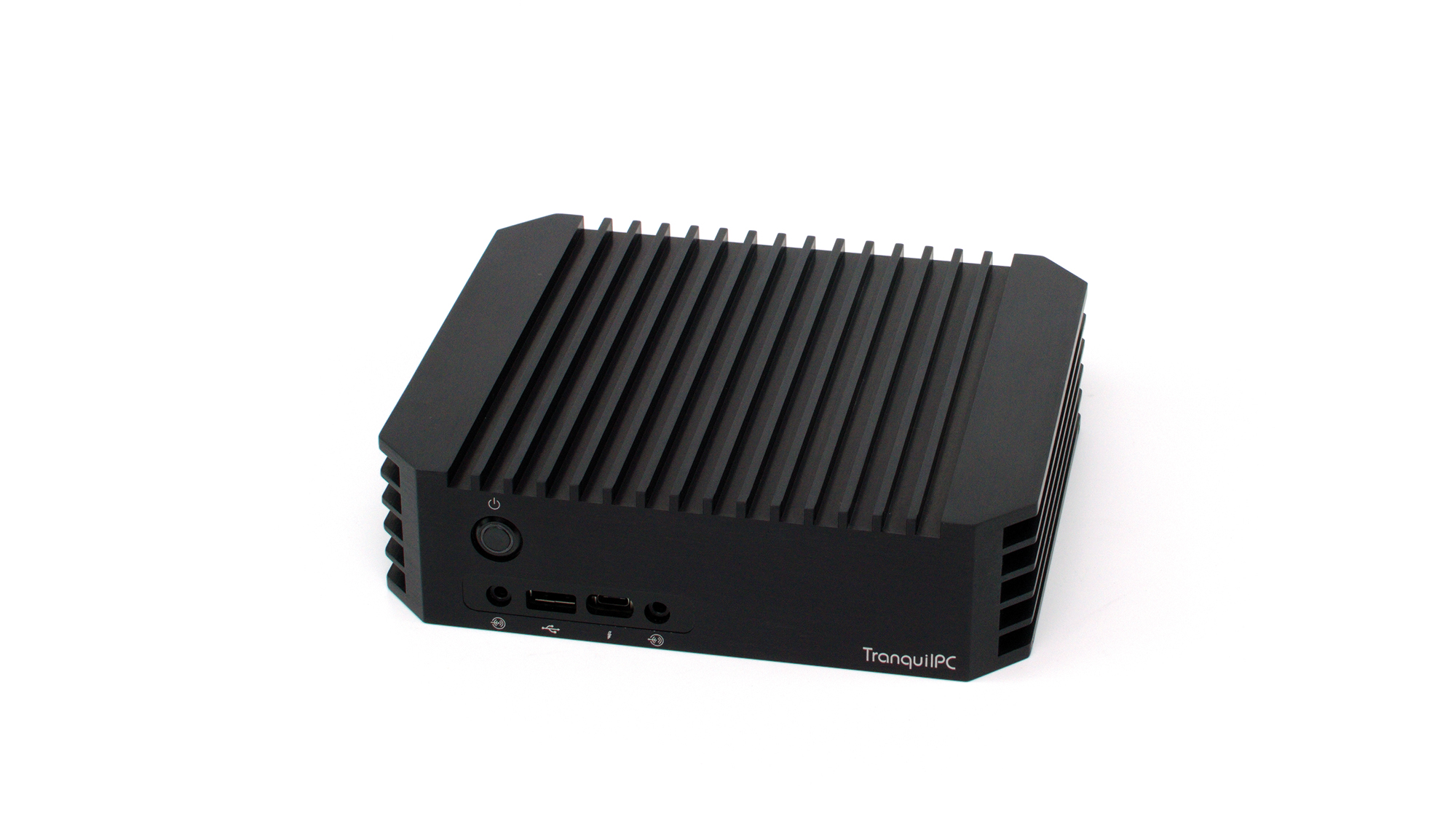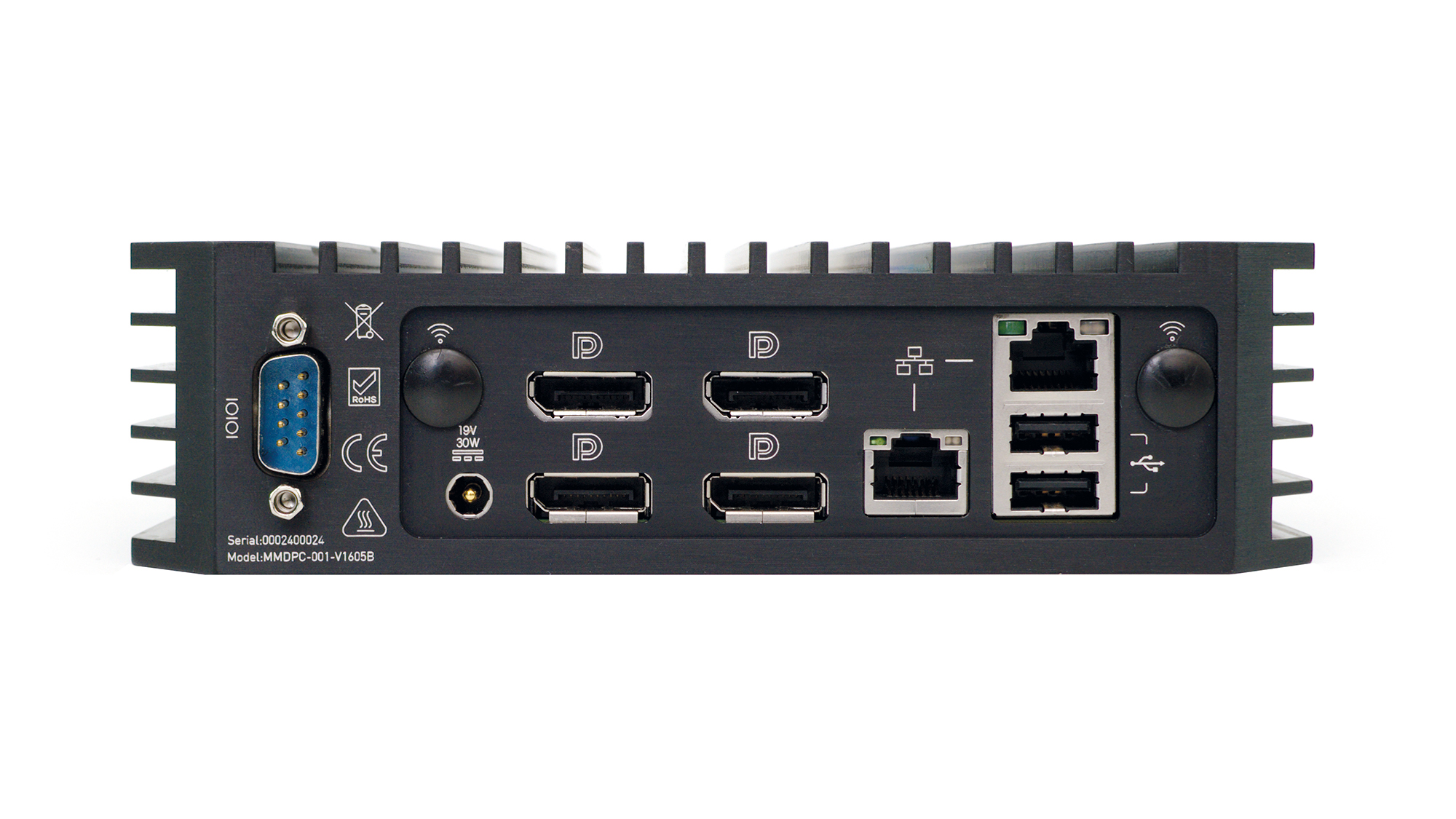QuietPC Mini Multi Display PC review: Caught between two worlds
Powered, unusually, by an AMD Ryzen Embedded processor, this powerhouse can drive four displays

While this mini PC is built for driving digital displays, its high price and somewhat underwhelming performance mean there are better-value choices depending one whether you want something for powering video walls or for general-purpose computing.
-
+
Surprisingly capable graphics performance; Good connectivity; Case acts as passive heatsink
-
-
Comparatively expensive; Middle-of-the-road processor performance; Fiddly internal design
It's safe to say AMD's making something of a comeback these days; not only is it cropping up in more and more laptops and workstations, it's even making its way into high-end data centre hardware as well.
Still, it's unusual enough to see one of AMD's Zen-based Ryzen processors offered from a system builder; it's doubly unusual when it's one of the Ryzen Embedded family, soldered chips designed for low-power small form factor use - as found in this signage-focused machine.
QuietPC Mini Multi Display PC review: Design
Aesthetically-speaking, this PC is nothing too flashy - it's going for function over form, and while the chassis' flanges make it look more akin to a sci-fi spacecraft than some of the more reserved designs we've seen on other compact desktops, they're there to serve a practical purpose by transforming the metal casing into a passive heatsink.
A cover underneath the machine looks like it should allow access to internal components. Instead, it reveals the underside of the motherboard; accessing the two SODIMM slots and internal SATA connector requires that the motherboard is unscrewed and removed from the chassis. There's also no room in the case to fit a 2.5in SSD, sadly, so you're restricted to M.2 drives.
QuietPC Mini Multi Display PC review: Specs and performance
There's a reason for picking the Ryzen Embedded V1605B over any of its Intel equivalents: the integrated Radeon Vega 8 graphics processor, which drives an impressive four DisplayPort outputs, all of which can be used simultaneously. It's also responsible for the machine's surprising performance in the Superposition graphics benchmark, returning a 36.2fps average at the 720p Low preset. That's considerably higher than most of its Intel-powered competition.

The graphics grunt offered by the chip does come at a cost, though, and that's its general-purpose performance: an overall score of 109 in our benchmark tests put it squarely in the middle of the pack when it comes to mini PCs, although this will likely still be more than enough for most use-cases. This is especially true if you're only wanting to use it to drive digital signage.
QuietPC Mini Multi Display PC review: Ports and features
Four DisplayPort outputs make up most of the connectivity, with the most modern feature being a USB-C 3.1 Gen 1 port on the front alongside a USB 2 port. While the rear does have dual Gigabit Ethernet, there are only another two USB 2 ports for peripherals - meaning connecting external storage will be limited to the front USB-C port or run at a performance disadvantage.
QuietPC Mini Multi Display PC review: Verdict
With the ability to drive four simultaneous displays, this compact machine would seem highly suited to operating as a digital signage machine or powering a video wall. However, the comparatively high price compared to devices like the Raspberry Pi 4 make it a somewhat uneconomical choice, unless you need a bit of extra muscle in terms of pure horsepower. For general-purpose computing tasks, there's also better choices out there, leaving this compact PC caught between two worlds.
Verdict
While this mini PC is built for driving digital displays, its high price and somewhat underwhelming performance mean there are better-value choices depending one whether you want something for powering video walls or for general-purpose computing.
| Processor | AMD Ryzen V1605B |
| RAM | 8GB DDR4-2400 SODIMM |
| Front USB ports | USB-A 3.1 Gen 1, USB-A 2 |
| Rear USB ports | 2 x USB-A 2 |
| Graphics card | Radeon Vega 8 |
| Storage | 250GB, M.2 NVMe/SATA (no drive mount) |
| Operating system | Windows 10 Home |
| Warranty | 2yr “open box” C&R |
Get the ITPro daily newsletter
Sign up today and you will receive a free copy of our Future Focus 2025 report - the leading guidance on AI, cybersecurity and other IT challenges as per 700+ senior executives
Gareth Halfacree is an experienced tech journalist and IT professional, and has been writing since 2006. In addition to contributing article for ITPro, Gareth has been featured in publications such as PC Pro, Techmeme, The Register, The MagPi, and Tom’s Hardware.
In addition to his digital articles, Gareth is the author of several best-selling books. These include the Raspberry Pi User Guide, an essential text for those looking to get started with their Raspberry Pi, as well as The Official Raspberry Pi Beginner’s Guide. Gareth also wrote the Official BBC micro:bit User Guide, a comprehensive guide to setting up the pocket-sized computer, learning to code on it, and even creating your own hardware addons.
-
 ‘Phishing kits are a force multiplier': Cheap cyber crime kits can be bought on the dark web for less than $25 – and experts warn it’s lowering the barrier of entry for amateur hackers
‘Phishing kits are a force multiplier': Cheap cyber crime kits can be bought on the dark web for less than $25 – and experts warn it’s lowering the barrier of entry for amateur hackersNews Research from NordVPN shows phishing kits are now widely available on the dark web and via messaging apps like Telegram, and are often selling for less than $25.
By Emma Woollacott Published
-
 Redis unveils new tools for developers working on AI applications
Redis unveils new tools for developers working on AI applicationsNews Redis has announced new tools aimed at making it easier for AI developers to build applications and optimize large language model (LLM) outputs.
By Ross Kelly Published
-
 Google layoffs continue with "hundreds" cut from Chrome, Android, and Pixel teams
Google layoffs continue with "hundreds" cut from Chrome, Android, and Pixel teamsNews The tech giant's efficiency drive enters a third year with devices teams the latest target
By Bobby Hellard Published

